- Joined
- Jun 8, 2008
- Messages
- 56,765
Ooh this is a very interesting piece fyi.
@mrs-b and everyone else who might be interested...

 www.wsj.com
www.wsj.com
@mrs-b and everyone else who might be interested...

Opinion | Electricity Is the New Medical Miracle
Stimulating the vagus nerve can relieve arthritis, Crohn’s disease and other inflammatory conditions—perhaps someday even Alzheimer’s disease.
Electricity Is the New Medical Miracle
Stimulating the vagus nerve can relieve arthritis, Crohn’s disease and other inflammatory conditions—perhaps someday even Alzheimer’s disease.
By Allysia FinleyFollow
July 22, 2022 3:51 pm ET
Kelly Owens was a medical mystery, her teens and 20s blighted by a cascade of seemingly unrelated health problems that left her debilitated. For a decade and a half she was put on one medication after another—22 in all—to little effect. Then electricity saved her.
“I didn’t even remember how ‘healthy’ felt, since it had been 15 years,” Ms. Owens, 33, says. Now she and her husband are talking about having a child, something she had thought impossible. She credits Kevin Tracey, an innovative neurosurgeon she found through Facebook.
Ms. Owens was an athletic 13-year-old when she twisted her ankle tap-dancing. A few weeks later, her ankle was still swollen and she began experiencing severe nausea and diarrhea. A year or two later, her other ankle swelled up, though she’d never injured it. Then her knees grew inflamed.
After a colonoscopy and endoscopy, she was diagnosed with Crohn’s disease, an inflammatory bowel condition. Blood tests and a physical examination revealed spondyloarthropathy arthritis, which attacked her spine, joints and organs. She developed blood clots and skin ulcers. By the time she finished college, she says, there wasn’t a joint in her body that didn’t hurt. Her myriad ailments made it difficult to walk and forced her to quit her job as a teacher. To control her joint inflammation, she was prescribed steroids, which made her bones as brittle as a 70-year-old woman’s.
WELCOME BACK
We noticed you're already a member. Please sign in to continue reading WSJ or your next reading experience may be blocked.
SIGN IN
She was 25 when she stumbled on a Facebook video of Dr. Tracey, CEO of the Manhasset, N.Y.-based Feinstein Institutes for Medical Research, discussing how electricity could replace medication. Dr. Tracey, 64, pioneered research showing that electrical stimulation of the vagus nerve—the nervous-system “motherboard” that originates at the back of the neck, which connects the brain to the rest of the body—could suppress inflammation that causes chronic diseases such as Crohn’s and rheumatoid arthritis.
She enrolled in a vagus-nerve stimulation trial by SetPoint Medical, a California-based biotech startup that Dr. Tracey co-founded in 2007. With financial help from family and friends, she and her husband moved to Amsterdam, one of the sites where the trial took place. The trial’s principal investigator was Geert D’Haens, a global expert in inflammatory bowel disease based at the Amsterdam University Medical Center.
SetPoint implanted a pacemaker-sized device in her chest cavity that sends stimulation to electrodes surgically placed on her vagus nerve. Her symptoms began to improve within weeks. Soon she was able not only to walk but to run. Two months after the device was implanted, doctors deemed her in clinical remission. Her ailments have remained at bay, and her doctors weaned her from steroids.
Scientists have long known that the vagus nerve carries signals between the brain and internal organs that regulate physiological processes such as digestion, breathing and heart rate. When you exercise, for instance, your heart speeds up. Then your brain sends a signal via the vagus nerve directing your heart to slow down so it doesn’t beat out of control.
Dr. Tracey’s breakthrough two decades ago was the discovery that the brain also controls the immune system through the vagus nerve. By using electrical stimulation to hack into neural networks, it’s possible to regulate the immune response and perhaps someday cure inflammatory conditions such as multiple sclerosis, lupus and even Alzheimer’s disease.
The story of this novel insight begins with Dr. Tracey’s painful childhood. His mother died of an inoperable brain tumor when he was 5. That sparked his interest in neurosurgery. He wanted to develop treatments so that other children wouldn’t have to suffer the way he and his two younger siblings had. He went to medical school and joined a New York hospital as a neurosurgery resident.
In 1985 he was caring for an 11-month-old girl named Janice. “She’d been crawling across the kitchen floor when her grandmother was cooking dinner. And grandma turned to drain boiling water in the sink and spilled the boiling water on her granddaughter,” Dr. Tracey recalls. “We didn’t think she was going to survive. But she did—she survived for a month—and then inexplicably went into shock and died in my arms. And so I was haunted by her death. She died of septic shock.”
Septic shock occurs when a nonfatal injury or infection leads to organ failure and dangerously low blood pressure. Sepsis causes 1 in 5 deaths worldwide. In 1985 scientists didn’t understand what causes the condition. Janice’s death spurred Dr. Tracey to research sepsis’ biological underpinnings: “What we discovered is that the molecule that killed Janice was made by her own immune system. It’s a molecule that’s known today as TNF”—tumor necrosis factor.
TNF is a cytokine, a protein made by the immune system to send signals that can cause or reduce inflammation. But the discovery of TNF explained only part of the mystery behind sepsis. Questions remained, Dr. Tracey said: “What is it that controls the amount of cytokines being produced? Why do some people, like Janice, make massive amounts of cytokines that can kill them?”
While testing an experimental drug that blocked TNF production in mice with strokes, his lab stumbled on a clue. The drug not only blocked TNF production in the rodents’ brains, which helped the strokes heal; it also turned off TNF and other cytokines made in the rest of the body. That led to the discovery that “the brain communicates to these organs by sending signals through the vagus nerve.”
His lab performed two more experiments in mice that confirmed this hypothesis. “So now we knew the vagus nerve could transmit this off-switch to the immune system.” He postulated that “if there’s an off-switch in the vagus nerve, there must be an on-switch, which is how a reflex works.” More experimentation and research proved his hunch true.
In the case of sepsis, bacteria activate white blood cells to produce cytokines, which can help heal wounds. An inflammatory condition like Ms. Owens’s can also trigger the release of cytokines. Problems arise when the nervous system fails to regulate the production of cytokines. “If the nervous system doesn’t control that response, the immune system can overproduce cytokines,” which can result in autoimmune conditions like rheumatoid arthritis and Crohn’s disease, Dr. Tracey says. Hence the treatment: “You can implant a device on the vagus nerve of humans, or animals, and by controlling the activity of the nerve with the nerve stimulating device, you can control the magnitude of the cytokine response.”
The vagus nerve is actually a network of some 160,000 nerve fibers, 80,000 on either side of the neck. Each fiber has a specific job—for instance, controlling heart rate. These fibers also deliver information to the brain, which processes them and sends signals back down the vagus nerve or to nearby structures such as the pituitary gland, which regulates hormone production.
How do doctors know which fiber or fibers to stimulate? Dr. Tracey explains a “cool trick called optogenetics,” which involves genetically engineering mice so that the fibers in their brain stem are stimulated to send signals to the body when activated by a laser beam. Researchers can then figure out which fibers control which processes by shining a laser on the neurons.
More than 100 trials world-wide are being conducted using vagus-nerve stimulation for an array of conditions. SetPoint has conducted three small trials on vagus-nerve stimulation for rheumatoid arthritis and Crohn’s. “The same device implanted in the same location can be used for other diseases,” says CEO Murthy Simhambhatla. (Dr. Tracey resigned from the company’s board in 2011 to spend more time in his lab after meeting the first rheumatoid-arthritis patient treated in a SetPoint clinical trial who experienced complete remission. He continues to work as a consultant for SetPoint.)
Eight of the 16 patients in Ms. Owens’s trial showed improvement after four months, and she and three others went into complete remission. SetPoint plans to conduct larger randomized controlled trials on patients who haven’t responded to biologic drugs. Such trials can take many years to complete, as they do for drugs, but the Food and Drug Administration has been helpful in supporting the innovation. Last year the FDA approved the technique to help people who have suffered damage to motor skills caused by strokes.
Vagus-nerve stimulation might also help some people suffering from “long Covid,” Dr. Tracey says, although he cautions more research is needed. A study earlier this year found that most long-Covid patients had signs pointing to vagus-nerve dysfunction, including diarrhea, dizziness and rapid heart rate. Many also showed signs of vagus-nerve damage on medical imaging.
Some patients may shudder at the idea of getting implanted with a device that sends electrical pulses up to their brains and back down to the body. “Some have been quick to say, well, vagus-nerve stimulation is invasive,” Dr. Tracey says. “Well, I would say that biologics are invasive too. They’re administered with needles.” He adds that the 150,000 or so epilepsy patients who have been treated with vagus-nerve stimulation over the decades have very rarely experienced side effects.
Some drugs also work by chemically stimulating the vagus nerve and may carry potential to treat conditions other than those for which they were originally developed. Dr. Tracey conducted a small trial that found famotidine (also known by the brand name Pepcid) can reduce the duration of acute Covid in patients with mild to moderate symptoms by activating the vagus nerve and suppressing the cytokine storm.
Healthy behaviors like exercise and meditation can also stimulate the vagus nerve, Dr. Tracey says, but they may not help patients whose nerve fibers are damaged or who have a genetic predisposition. The latter might have caused Ms. Owens’s ailments.
Dr. Tracey is reluctant to say she’s cured: “She might be. We don’t know. How do you know if she’s cured? No one wants to turn the device off.” But she feels like a normal, healthy 33-year-old, and she hopes her story will inspire others with similar conditions: “Patients really need to have hope.”
Stimulating the vagus nerve can relieve arthritis, Crohn’s disease and other inflammatory conditions—perhaps someday even Alzheimer’s disease.
By Allysia FinleyFollow
July 22, 2022 3:51 pm ET
Kelly Owens was a medical mystery, her teens and 20s blighted by a cascade of seemingly unrelated health problems that left her debilitated. For a decade and a half she was put on one medication after another—22 in all—to little effect. Then electricity saved her.
“I didn’t even remember how ‘healthy’ felt, since it had been 15 years,” Ms. Owens, 33, says. Now she and her husband are talking about having a child, something she had thought impossible. She credits Kevin Tracey, an innovative neurosurgeon she found through Facebook.
Ms. Owens was an athletic 13-year-old when she twisted her ankle tap-dancing. A few weeks later, her ankle was still swollen and she began experiencing severe nausea and diarrhea. A year or two later, her other ankle swelled up, though she’d never injured it. Then her knees grew inflamed.
After a colonoscopy and endoscopy, she was diagnosed with Crohn’s disease, an inflammatory bowel condition. Blood tests and a physical examination revealed spondyloarthropathy arthritis, which attacked her spine, joints and organs. She developed blood clots and skin ulcers. By the time she finished college, she says, there wasn’t a joint in her body that didn’t hurt. Her myriad ailments made it difficult to walk and forced her to quit her job as a teacher. To control her joint inflammation, she was prescribed steroids, which made her bones as brittle as a 70-year-old woman’s.
WELCOME BACK
We noticed you're already a member. Please sign in to continue reading WSJ or your next reading experience may be blocked.
SIGN IN
She was 25 when she stumbled on a Facebook video of Dr. Tracey, CEO of the Manhasset, N.Y.-based Feinstein Institutes for Medical Research, discussing how electricity could replace medication. Dr. Tracey, 64, pioneered research showing that electrical stimulation of the vagus nerve—the nervous-system “motherboard” that originates at the back of the neck, which connects the brain to the rest of the body—could suppress inflammation that causes chronic diseases such as Crohn’s and rheumatoid arthritis.
She enrolled in a vagus-nerve stimulation trial by SetPoint Medical, a California-based biotech startup that Dr. Tracey co-founded in 2007. With financial help from family and friends, she and her husband moved to Amsterdam, one of the sites where the trial took place. The trial’s principal investigator was Geert D’Haens, a global expert in inflammatory bowel disease based at the Amsterdam University Medical Center.
SetPoint implanted a pacemaker-sized device in her chest cavity that sends stimulation to electrodes surgically placed on her vagus nerve. Her symptoms began to improve within weeks. Soon she was able not only to walk but to run. Two months after the device was implanted, doctors deemed her in clinical remission. Her ailments have remained at bay, and her doctors weaned her from steroids.
Scientists have long known that the vagus nerve carries signals between the brain and internal organs that regulate physiological processes such as digestion, breathing and heart rate. When you exercise, for instance, your heart speeds up. Then your brain sends a signal via the vagus nerve directing your heart to slow down so it doesn’t beat out of control.
Dr. Tracey’s breakthrough two decades ago was the discovery that the brain also controls the immune system through the vagus nerve. By using electrical stimulation to hack into neural networks, it’s possible to regulate the immune response and perhaps someday cure inflammatory conditions such as multiple sclerosis, lupus and even Alzheimer’s disease.
The story of this novel insight begins with Dr. Tracey’s painful childhood. His mother died of an inoperable brain tumor when he was 5. That sparked his interest in neurosurgery. He wanted to develop treatments so that other children wouldn’t have to suffer the way he and his two younger siblings had. He went to medical school and joined a New York hospital as a neurosurgery resident.
In 1985 he was caring for an 11-month-old girl named Janice. “She’d been crawling across the kitchen floor when her grandmother was cooking dinner. And grandma turned to drain boiling water in the sink and spilled the boiling water on her granddaughter,” Dr. Tracey recalls. “We didn’t think she was going to survive. But she did—she survived for a month—and then inexplicably went into shock and died in my arms. And so I was haunted by her death. She died of septic shock.”
Septic shock occurs when a nonfatal injury or infection leads to organ failure and dangerously low blood pressure. Sepsis causes 1 in 5 deaths worldwide. In 1985 scientists didn’t understand what causes the condition. Janice’s death spurred Dr. Tracey to research sepsis’ biological underpinnings: “What we discovered is that the molecule that killed Janice was made by her own immune system. It’s a molecule that’s known today as TNF”—tumor necrosis factor.
TNF is a cytokine, a protein made by the immune system to send signals that can cause or reduce inflammation. But the discovery of TNF explained only part of the mystery behind sepsis. Questions remained, Dr. Tracey said: “What is it that controls the amount of cytokines being produced? Why do some people, like Janice, make massive amounts of cytokines that can kill them?”
While testing an experimental drug that blocked TNF production in mice with strokes, his lab stumbled on a clue. The drug not only blocked TNF production in the rodents’ brains, which helped the strokes heal; it also turned off TNF and other cytokines made in the rest of the body. That led to the discovery that “the brain communicates to these organs by sending signals through the vagus nerve.”
His lab performed two more experiments in mice that confirmed this hypothesis. “So now we knew the vagus nerve could transmit this off-switch to the immune system.” He postulated that “if there’s an off-switch in the vagus nerve, there must be an on-switch, which is how a reflex works.” More experimentation and research proved his hunch true.
In the case of sepsis, bacteria activate white blood cells to produce cytokines, which can help heal wounds. An inflammatory condition like Ms. Owens’s can also trigger the release of cytokines. Problems arise when the nervous system fails to regulate the production of cytokines. “If the nervous system doesn’t control that response, the immune system can overproduce cytokines,” which can result in autoimmune conditions like rheumatoid arthritis and Crohn’s disease, Dr. Tracey says. Hence the treatment: “You can implant a device on the vagus nerve of humans, or animals, and by controlling the activity of the nerve with the nerve stimulating device, you can control the magnitude of the cytokine response.”
The vagus nerve is actually a network of some 160,000 nerve fibers, 80,000 on either side of the neck. Each fiber has a specific job—for instance, controlling heart rate. These fibers also deliver information to the brain, which processes them and sends signals back down the vagus nerve or to nearby structures such as the pituitary gland, which regulates hormone production.
How do doctors know which fiber or fibers to stimulate? Dr. Tracey explains a “cool trick called optogenetics,” which involves genetically engineering mice so that the fibers in their brain stem are stimulated to send signals to the body when activated by a laser beam. Researchers can then figure out which fibers control which processes by shining a laser on the neurons.
More than 100 trials world-wide are being conducted using vagus-nerve stimulation for an array of conditions. SetPoint has conducted three small trials on vagus-nerve stimulation for rheumatoid arthritis and Crohn’s. “The same device implanted in the same location can be used for other diseases,” says CEO Murthy Simhambhatla. (Dr. Tracey resigned from the company’s board in 2011 to spend more time in his lab after meeting the first rheumatoid-arthritis patient treated in a SetPoint clinical trial who experienced complete remission. He continues to work as a consultant for SetPoint.)
Eight of the 16 patients in Ms. Owens’s trial showed improvement after four months, and she and three others went into complete remission. SetPoint plans to conduct larger randomized controlled trials on patients who haven’t responded to biologic drugs. Such trials can take many years to complete, as they do for drugs, but the Food and Drug Administration has been helpful in supporting the innovation. Last year the FDA approved the technique to help people who have suffered damage to motor skills caused by strokes.
Vagus-nerve stimulation might also help some people suffering from “long Covid,” Dr. Tracey says, although he cautions more research is needed. A study earlier this year found that most long-Covid patients had signs pointing to vagus-nerve dysfunction, including diarrhea, dizziness and rapid heart rate. Many also showed signs of vagus-nerve damage on medical imaging.
Some patients may shudder at the idea of getting implanted with a device that sends electrical pulses up to their brains and back down to the body. “Some have been quick to say, well, vagus-nerve stimulation is invasive,” Dr. Tracey says. “Well, I would say that biologics are invasive too. They’re administered with needles.” He adds that the 150,000 or so epilepsy patients who have been treated with vagus-nerve stimulation over the decades have very rarely experienced side effects.
Some drugs also work by chemically stimulating the vagus nerve and may carry potential to treat conditions other than those for which they were originally developed. Dr. Tracey conducted a small trial that found famotidine (also known by the brand name Pepcid) can reduce the duration of acute Covid in patients with mild to moderate symptoms by activating the vagus nerve and suppressing the cytokine storm.
Healthy behaviors like exercise and meditation can also stimulate the vagus nerve, Dr. Tracey says, but they may not help patients whose nerve fibers are damaged or who have a genetic predisposition. The latter might have caused Ms. Owens’s ailments.
Dr. Tracey is reluctant to say she’s cured: “She might be. We don’t know. How do you know if she’s cured? No one wants to turn the device off.” But she feels like a normal, healthy 33-year-old, and she hopes her story will inspire others with similar conditions: “Patients really need to have hope.”

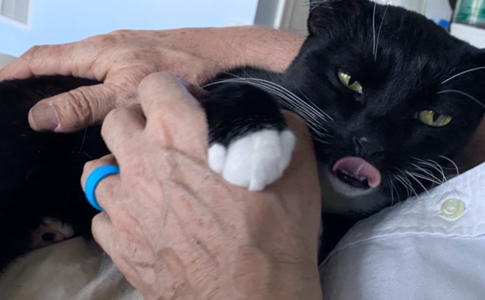


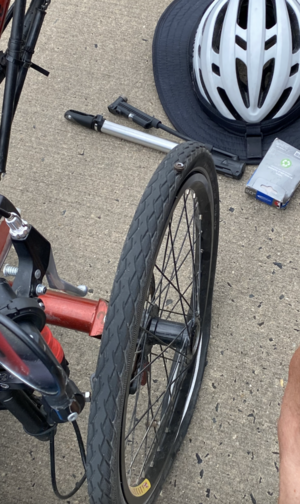
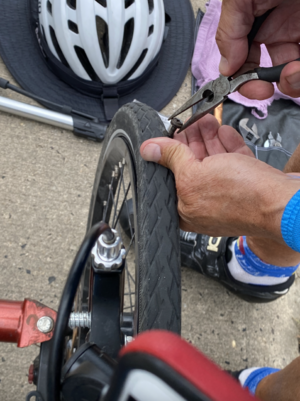
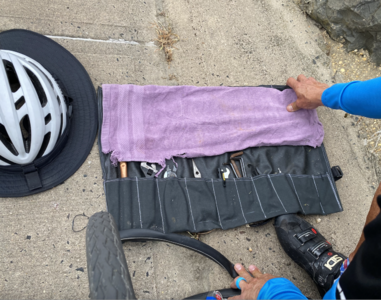
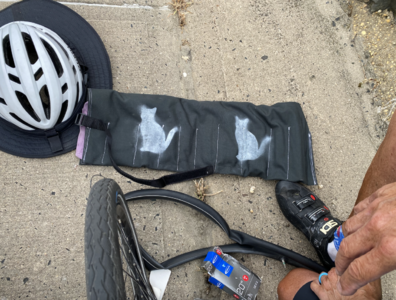
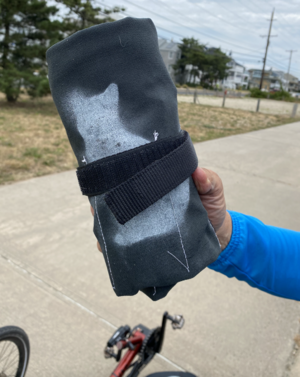
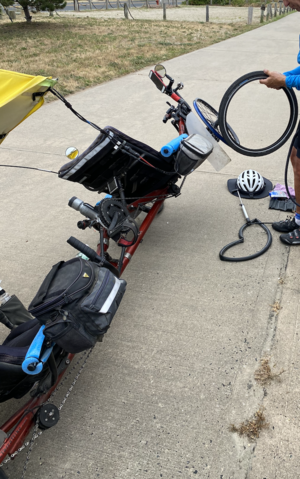











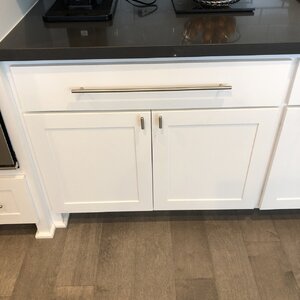


300x240.png)